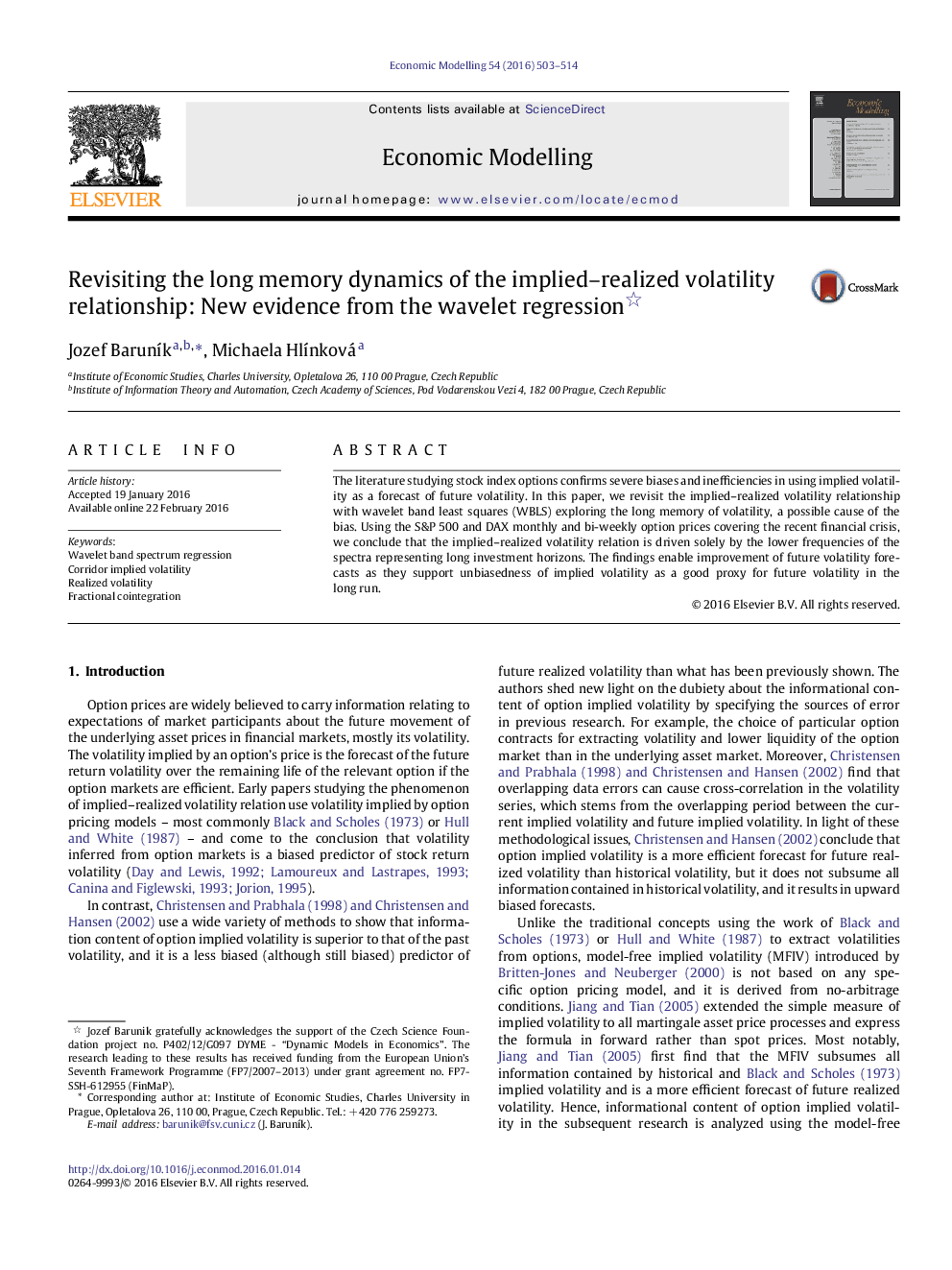| Article ID | Journal | Published Year | Pages | File Type |
|---|---|---|---|---|
| 5053410 | Economic Modelling | 2016 | 12 Pages |
â¢We study the time-frequency dynamics of the implied-realized volatility relation.â¢New band spectral regression on wavelet coefficients is proposed for the estimation of cointegrating relation.â¢We advocate using corridor implied volatility (CIV) as an unbiased predictor of realized volatility.â¢Long-run unbiasedness of implied volatility as a predictor of future volatility is confirmed using the new measures.
The literature studying stock index options confirms severe biases and inefficiencies in using implied volatility as a forecast of future volatility. In this paper, we revisit the implied-realized volatility relationship with wavelet band least squares (WBLS) exploring the long memory of volatility, a possible cause of the bias. Using the S&P 500 and DAX monthly and bi-weekly option prices covering the recent financial crisis, we conclude that the implied-realized volatility relation is driven solely by the lower frequencies of the spectra representing long investment horizons. The findings enable improvement of future volatility forecasts as they support unbiasedness of implied volatility as a good proxy for future volatility in the long run.
